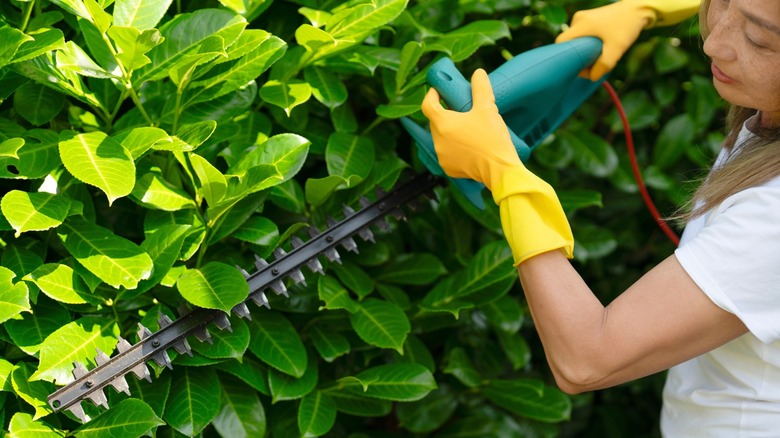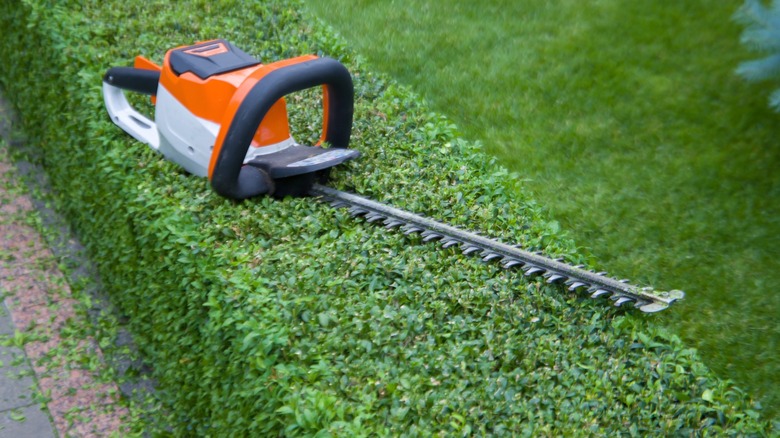Single Vs. Double-Sided Hedge Trimmer: Which Do Users Say Is Easier To Use?
Single-sided and double-sided trimmers may do the same job, but there are important differences when it comes to control, speed, and comfort. As the names suggest, single-sided trimmers are designed with blades on one side only, while double-sided trimmers cut on both sides of the blade, allowing users to trim in either direction without having to reposition the tool. While double-sided trimmers sound efficient, that efficiency comes at a trade-off. There are more moving blades to manage and potentially less precision.
Double-sided trimmers are the more common choice for residential users. They handle shaping and maintenance with ease. On the other hand, single-sided versions are often favored by professionals who claim they're better for clean, long strokes without unnecessary bulk. Many people have strong opinions on which is easier to use. However, if you're planning to buy a new hedge trimmer, the right choice will come down to what kind of hedge you're tackling and how much trimming you're planning to do.
Balancing speed, comfort, and control
Single and double-sided hedge trimmers each bring their own advantages. Especially so when it comes to ease of use. Single-sided models are generally lighter and safer. They have blades on only one side and a guard for safety on the other. This is important since hedge trimmers are one of the commonly used power tools that can be incredibly dangerous. The lighter weight reduces fatigue during long trimming sessions and makes them easier for beginners to control. Professionals often prefer them for large, uniform hedges. This is because they excel at creating long, straight cuts with precision,
Double-sided trimmers, on the other hand, are built for speed and versatility. They allow cutting in either direction without stopping to change position. This makes them more efficient for shaping and for tackling varied hedge designs. Especially when working in tight spaces or around corners. The trade-off is that they can be heavier and slightly less precise. This means they need more care to avoid over-cutting. User experiences often back up these strengths. Many note that the ability to trim back and forth without wasted movement. This is especially helpful for taller hedges at eye or chest height. For smaller gardens with mixed hedge shapes, this flexibility is invaluable. Meanwhile, those who prefer single-sided models often emphasize the comfort and safety factor. They say it's much less tiring on long, repetitive trimming jobs.

